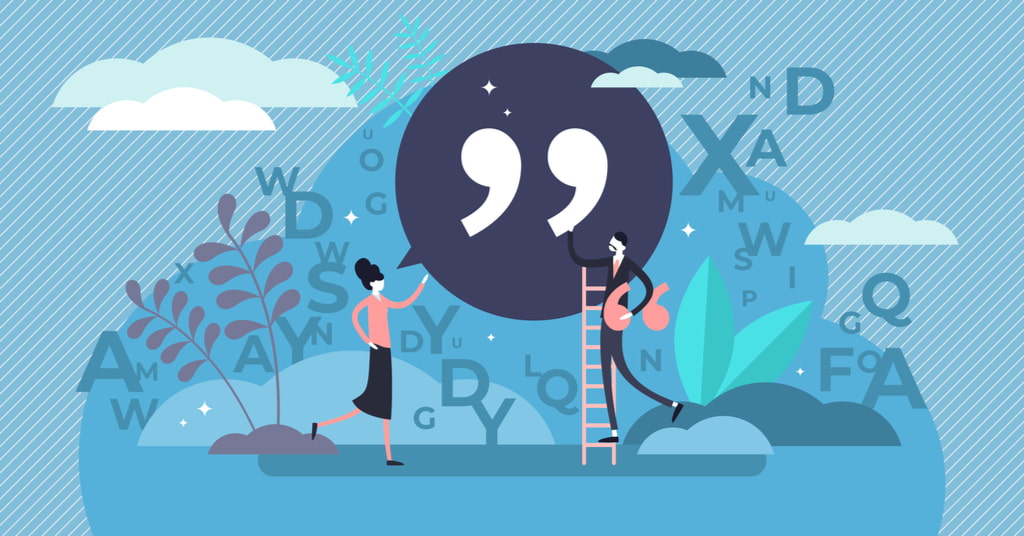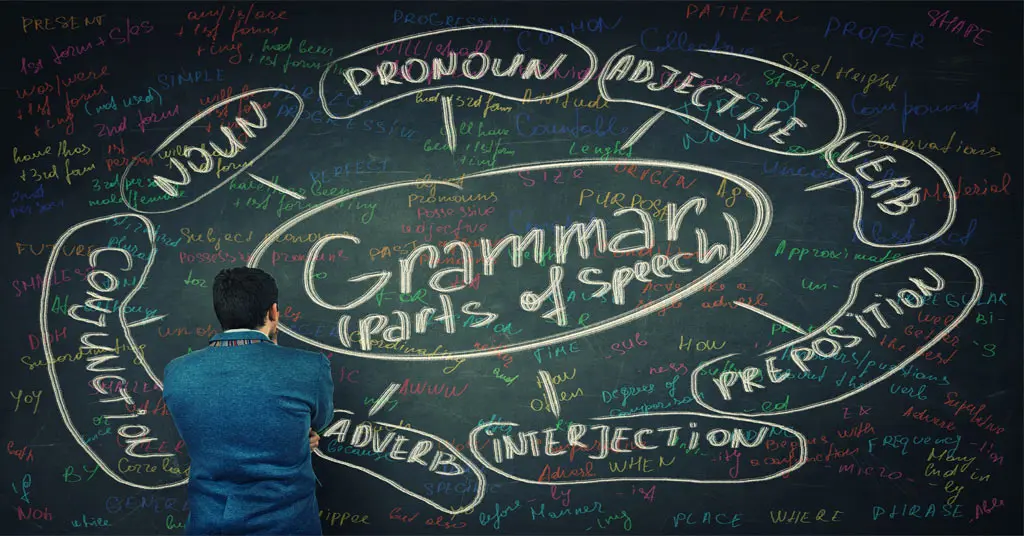How Punctuation Appears on the SAT
Punctuation shows up frequently on the SAT® Reading and Writing section, and many questions test how well you can spot errors in comma placement, apostrophes, colons, and dashes. Understanding the key punctuation rules for SAT questions helps you make quick, confident decisions. Instead of memorizing every grammar term, focus on how punctuation affects clarity and sentence structure. Most SAT punctuation rules revolve around separating ideas, marking ownership, or introducing information. As you work through punctuation for SAT passages, expect to analyze how each mark supports meaning and context. Strong SAT punctuation practice can noticeably boost your accuracy on these question types.
Comma Rules for the SAT
Commas appear in several common question types on the SAT, and understanding how they shape sentence meaning is essential. Many SAT punctuation rules focus on separating ideas, preventing run-ons, and ensuring sentences read smoothly. Strong punctuation rules for SAT questions begin with mastering when commas are required and when they should be removed.
1. Listing with Commas (Series Commas)
Use commas to separate three or more items in a series. The SAT tests whether all items are clearly divided and whether unnecessary commas have been inserted.
Example: The robotics club plans to design the model, build the prototype, and present the final version at the exhibition.
Explanation: Each item in the list (design, build, present) functions independently, so commas are needed to separate them. Incorrect SAT punctuation often removes a necessary comma or adds one where it does not belong.
2. Restrictive vs Nonrestrictive Clauses
A restrictive clause is essential to the meaning of a sentence and does not take commas. A nonrestrictive clause adds extra information and must be set off with commas.
Example (Nonrestrictive): The novel, which was first published in 1925, remains widely studied today.
Explanation: The clause "which was first published in 1925" is additional information. Removing it does not change the core meaning, so commas are required.
Example (Restrictive): Students who review practice questions regularly tend to improve their scores.
Explanation: The clause "who review practice questions regularly" is essential because it tells which students. No commas should be used.
3. Introductory Phrases and Dependent Clauses
Place a comma after an introductory word, phrase, or dependent clause to signal a natural pause and improve clarity.
Example: After analyzing the results, the scientists revised their original theory.
Explanation: The introductory dependent clause "After analyzing the results" must be followed by a comma to separate it from the main clause.
4. Commas Between Coordinate vs Non-Coordinate Adjectives
Use a comma between coordinate adjectives, which provide equal and independent descriptions. Do not use a comma between non-coordinate adjectives, where one adjective modifies the other.
Coordinate Example: It was a long, exhausting day for the volunteers.
Explanation: You can use "and" between the adjectives (long and exhausting), and you can switch their order. This means they are Coordinate and require a comma.
Non-Coordinate Example: The museum displayed a new digital exhibit.
Explanation: Digital modifies exhibit more directly than new does. The adjectives cannot be switched and do not take a comma.
5. Appositives (Essential vs Nonessential)
An appositive is a noun or noun phrase that renames another noun. Nonessential appositives take commas. Essential ones do not.
Nonessential Appositive Example: Ms. Hayes, the director of the program, introduced the keynote speaker.
Explanation: “The director of the program” gives extra information about Ms. Hayes. Since the sentence still makes sense without it, commas are needed.
Essential Appositive Example: The poet Emily Dickinson wrote hundreds of poems that were published posthumously.
Explanation: “Emily Dickinson” specifies which poet. This information is essential to the meaning, so commas are not used.
You can reinforce these punctuation rules with our SAT Question Bank, which offers hundreds of practice questions with detailed explanations, helping you apply what you’ve learned and track your progress.
Semicolon Rules for the SAT
Semicolons appear less frequently than commas on the SAT, but the test expects you to know exactly when they are appropriate. Most SAT punctuation rules involving semicolons focus on connecting related ideas or organizing complex lists. Since semicolons are often confused with commas and colons, understanding their precise function can help you avoid common errors. As you work through punctuation rules for SAT questions, pay close attention to whether the ideas on both sides of the semicolon can stand alone as complete sentences.
1. Use a semicolon to join two closely related independent clauses.
A semicolon acts as a strong connector between two complete thoughts that are closely linked in meaning.
Example:
The students completed the experiment successfully; the results supported their hypothesis.
Explanation:
Both sides are independent clauses. Using a semicolon shows that the ideas are connected without adding a conjunction.
2. Use a semicolon before a conjunctive adverb or transitional phrase that links independent clauses.
Words like however, therefore, moreover, consequently, and similarly often appear in SAT punctuation questions.
Example: The proposal received strong support from the committee; however, it still required several revisions.
Explanation: A semicolon is needed before “however” because it connects two independent clauses. A comma follows the transitional word.
3. Use semicolons to separate items in a complex list when the items already contain commas.
This rule is less common but occasionally appears in SAT punctuation practice passages, especially in historical or scientific texts.
Example: The conference welcomed attendees from Houston, Texas; Denver, Colorado; and Portland, Oregon.
Explanation: Each item contains its own comma, so semicolons help separate them clearly.
4. Do not use a semicolon to connect an independent clause with a dependent clause.
This is a frequent SAT error. A semicolon cannot join an incomplete thought to a complete sentence.
Incorrect: Because the data was incomplete; the researchers postponed the publication.
Correct: Because the data was incomplete, the researchers postponed the publication.
Explanation: “Because the data was incomplete” is not an independent clause, so it cannot follow a semicolon.
5. Do not replace a comma in a simple list with a semicolon.
Semicolons are only for complex lists or independent clauses. Using one in a basic list is incorrect on the SAT.
Incorrect: The students brought pencils; notebooks; and calculators.
Correct: The students brought pencils, notebooks, and calculators.
Explanation: A semicolon should not be used in a simple list because commas already separate the items clearly and correctly.
Colon Rules on the SAT
Colons are an important part of SAT punctuation rules because they help introduce information, explain ideas, and create emphasis. When working through punctuation rules for SAT questions, remember that a colon must follow a complete sentence. What comes after the colon should clarify or expand the idea already established.
1. Use a colon to introduce a list that follows a complete sentence.
One of the most common colon uses on the SAT is introducing a list. The sentence before the colon must express a complete thought.
Example: The lab requires the following materials: goggles, gloves, and a heat-resistant mat.
Explanation: The statement before the colon stands on its own and properly sets up the list.
2. Use a colon to introduce an explanation or elaboration.
Colons often signal that the next part of the sentence will clarify or expand on the idea that comes before it. This pattern appears frequently in SAT punctuation questions.
Example: The plan succeeded for one reason: everyone followed the instructions carefully.
Explanation: The information after the colon explains the main idea in the first clause.
3. Use a colon before a quotation introduced by a complete sentence.
The SAT may also test how colons introduce quotations. The key requirement is that the lead-in sentence must be a full, complete statement.
Example: The coach emphasized the team’s guiding principle: “Work hard and stay disciplined.”
Explanation: The sentence before the colon is complete and prepares the reader for the quotation.
4. Do not place a colon after a verb or preposition.
A frequent SAT punctuation error involves placing a colon directly after a verb or preposition. The test expects you to recognize when the sentence is incomplete before the colon.
Incorrect: The students brought: notebooks, calculators, and pencils.
Correct: The students brought notebooks, calculators, and pencils.
Explanation: A colon cannot follow a verb that directly leads into the list.
5. Use a colon to emphasize a key idea or conclusion.
Writers sometimes use colons to highlight a final idea or conclusion. The SAT may include examples where the colon places special focus on the most important point.
Example: She made one commitment to herself: finish every assignment ahead of schedule.
Explanation: The colon introduces and emphasizes the essential idea that completes the sentence.
For a complete reference covering all SAT punctuation rules, examples, and common errors, our SAT Prep Book is an essential resource to review and practice effectively.
Apostrophe Rules for the SAT
Apostrophes are a key part of SAT punctuation rules because they mark possession and form contractions. Many punctuation rules for SAT questions focus on whether the apostrophe is placed correctly or whether it appears in a word that should not have one at all. Mastering these patterns will help you avoid common errors and quickly identify incorrect usage in SAT punctuation practice.
1. Use an apostrophe to show singular possession.
A singular noun shows ownership by adding an apostrophe and the letter s.
Example: The professor’s lecture explained the theory clearly.
Explanation: One professor owns the lecture, so the apostrophe goes before the s.
2. Use an apostrophe to show plural possession.
Plural nouns that already end in s add only an apostrophe.
Example: The researchers’ findings were published in a major journal.
Explanation: Researchers is plural, so the apostrophe follows the final s.
3. Use an apostrophe with irregular plural nouns.
Irregular plurals that do not end in s add an apostrophe and s.
Example: The children’s artwork filled the entire hallway.
Explanation: Children is an irregular plural, so it takes ’s for possession.
4. Use apostrophes to form contractions.
Apostrophes replace missing letters in contractions commonly seen in SAT passages.
Example: It’s important to review the instructions before starting the assignment.
Explanation: “It’s” means “it is.” The apostrophe shows the missing letter.
5. Do not use an apostrophe with possessive pronouns.
Words like its, your, their, and whose never take apostrophes.
Example: The team presented its project to the judges.
Explanation: “Its” is a possessive pronoun. Adding an apostrophe would be incorrect.
6. Do not use an apostrophe to make a noun plural.
Apostrophes are not used to form regular plurals on the SAT.
Incorrect: The library has many book’s available.
Correct: The library has many books available.
Explanation: Books is a simple plural and does not need an apostrophe.
Hyphen & Dash Rules for the SAT
Hyphens and dashes serve distinct roles in SAT punctuation questions. Understanding the difference helps you answer questions more accurately. While hyphens join words, dashes (especially em dashes) set off information, create emphasis, or signal interruptions. The SAT tests these marks primarily for clarity and proper sentence structure.
Hyphen (-)
Hyphens join words to form compound adjectives, compound nouns, or to avoid ambiguity. They do not create pauses like dashes do.
Hyphen Rules
1. Compound Numbers
Hyphens are used in written numbers from twenty-one to ninety-nine to avoid confusion between the tens and units. This ensures the number is read correctly as a single value.
Example: The survey included forty-three participants.
Explanation: “Forty-three” uses a hyphen to connect the tens (“forty”) and units (“three”), clarifying that it is one number rather than two separate numbers.
2. Fractions Used as Adjectives
When a fraction describes or modifies a noun, a hyphen links the numbers to form a single adjective, making the meaning clear.
Example: A two-thirds majority is required to pass the motion.
Explanation: The hyphen in “two-thirds” shows that the fraction functions as a single modifier for “majority.”
3. Prefixes and Suffixes in Certain Cases
Hyphens are used with prefixes like ex-, self-, all-, or when adding a hyphen avoids repeated letters or ambiguity. This keeps the word clear and readable.
Example: She is a self-employed consultant.
Explanation: “Self-employed” uses a hyphen because “self” modifies “employed” as a single idea.
Example: It was a re-examine process.
Explanation: “Re-examine” uses a hyphen to avoid confusion with “reexamine,” which could be misread.
En Dash (–)
En dashes are used to indicate ranges, spans, or connections between numbers, dates, or pages. SAT questions rarely test this directly, but recognizing it helps with clarity.
En Dash Rules
1. Connections Between Words
En dashes are used to indicate a relationship or connection between two nouns, often showing “to” or “through.”
Example: The New York–London flight was delayed.
Explanation: The en dash connects the two cities to show the route of the flight. It replaces “to” and clearly links the two proper nouns, which would be less clear with a hyphen.
2. Complex Compound Adjectives
When a compound adjective already contains a hyphen, an en dash can join it to another word to avoid confusion.
Example: A post–World War II economic boom transformed the country.
Explanation: “World War II” already contains spaces and could be misread if a hyphen were used. The en dash connects “post” to the full compound, clarifying that it modifies “economic boom.”
Em Dash (—)
The em dash is the type most frequently tested on the SAT. It can replace commas, parentheses, or colons to add emphasis, set off nonessential information, or indicate abrupt shifts.
Em Dash Rules
1. Setting off nonessential information
Use an em dash to set apart extra information that can be removed without changing the main sentence.
Example: The results — verified by multiple experiments — confirmed the hypothesis.
Explanation: The phrase between the dashes is nonessential and can be omitted.
2. Emphasis at the end of a sentence
An em dash can highlight a key idea at the conclusion of a sentence.
Example: She achieved one major goal — improving her SAT score.
Explanation: The em dash draws attention to the important idea.
3. Abrupt shifts or interruptions
Use an em dash to indicate a sudden change or break in thought.
Example: I planned to finish the report tonight — if time permits.
Explanation: The dash signals a quick shift in the sentence’s direction.
4. Consistency in punctuation
Ensure both ends of a nonessential phrase use em dashes, not mixed punctuation.
Incorrect: The data — which was collected yesterday, was analyzed today.
Correct: The data — which was collected yesterday — was analyzed today.
Explanation: Matching punctuation maintains sentence clarity.
5. Avoid unnecessary dashes
Use an em dash only when it improves clarity or emphasis; commas or colons may work better.
Example: The study produced one conclusion — collaboration increases accuracy.
Explanation: The em dash introduces the conclusion and emphasizes its importance.
Mastering commas and other punctuation marks is easier with our SAT Prep Course, which provides step-by-step lessons, interactive exercises, and real SAT-style questions.
Common SAT Punctuation Mistakes to Avoid
The SAT often tests punctuation to see if students can identify errors that affect clarity or meaning. Knowing the most common mistakes can help you avoid losing points and ensure your writing follows standard conventions.
- Commas: A common mistake with commas is misplacing them in restrictive versus nonrestrictive clauses. On the SAT, restrictive clauses contain essential information and should not be set off with commas, while nonrestrictive clauses are extra information and do require commas. For example, “Students, who study regularly improve their scores” is incorrect because the clause is essential. The correct version is “Students who study regularly improve their scores.” Understanding this distinction ensures your commas clarify rather than confuse meaning.
- Semicolons: Students often misuse semicolons by connecting an independent clause with a dependent clause. A semicolon should only join two complete, independent thoughts. For instance, “Because the instructions were unclear; the students made mistakes” is incorrect because the first part is dependent. The correct punctuation is “Because the instructions were unclear, the students made mistakes.” Remembering this rule prevents errors that could alter sentence structure.
- Colons: A frequent colon mistake on the SAT is placing it after a verb or preposition. Colons must follow a complete sentence, not a fragment. For example, “The students brought: pencils, notebooks, and calculators” is incorrect. The correct sentence is “The students brought pencils, notebooks, and calculators.” Using a colon correctly ensures that the reader understands the list or explanation that follows.
- Apostrophes: Many students incorrectly use apostrophes to form plurals. Apostrophes are meant for showing possession or forming contractions, not for regular plural nouns. For instance, “The library has many book’s available” is incorrect; it should be “The library has many books available.” Misusing apostrophes is a common SAT punctuation trap that can be easily avoided by remembering their proper function.
- Em Dashes: A common error with em dashes is mixing punctuation at the ends of nonessential phrases. On the SAT, if a phrase is set off in the middle of a sentence, both ends must use matching dashes. For example, “The results — which were verified yesterday, was analyzed today” is incorrect. The correct version is “The results — which were verified yesterday — was analyzed today.” Maintaining consistency ensures clarity and avoids confusing the reader.
- Hyphens: Omitting hyphens in compound adjectives is another frequent mistake. Hyphens are required when two or more words jointly modify a noun. For example, “She submitted a well-written essay” is incorrect. The correct sentence is “She submitted a well-written essay.” Using hyphens correctly clarifies meaning and demonstrates precise punctuation skills on the SAT.
- En Dashes: Finally, students sometimes use a hyphen instead of an en dash for ranges. En dashes are used to indicate spans of numbers, dates, or pages. For instance, “The meeting is scheduled for June 3-7” is incorrect; it should be “The meeting is scheduled for June 3–7.” Recognizing the difference between a hyphen and an en dash is a subtle but important SAT punctuation rule.
SAT Punctuation Rules: Frequently Asked Questions
How many punctuation questions are on the SAT?
The number of punctuation questions varies slightly from test to test, but you can generally expect 5–10 questions in the Reading and Writing section. These questions focus on commas, semicolons, colons, apostrophes, and dashes, testing your ability to improve sentence clarity and correctness.
Which punctuation marks appear most often?
Commas are the most frequently tested punctuation mark on the SAT, followed by semicolons, colons, apostrophes, and dashes. Hyphens and en dashes appear less often but are still important to recognize for compound modifiers and number ranges.
How can I practice punctuation for the SAT effectively?
The best approach is consistent practice using official questions, full-length SAT Practice tests, targeted exercises, and timed passages. Focus on understanding rules, spotting common mistakes, and reviewing explanations to reinforce proper punctuation usage.
Is there a SAT punctuation rules PDF or cheat sheet?
Yes, many prep resources offer PDF guides or cheat sheets summarizing SAT punctuation rules. These are useful for quick review before practice sessions or the exam, helping you recall key rules and examples at a glance.




